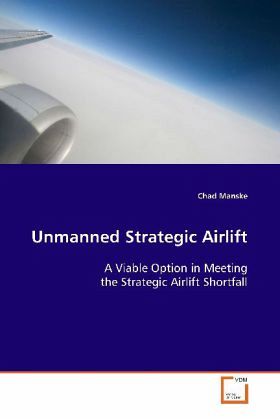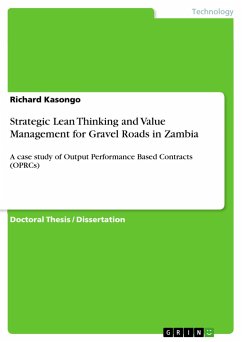
Unmanned Strategic Airlift
A Viable Option in Meeting the Strategic Airlift Shortfall
Versandkostenfrei!
Versandfertig in 6-10 Tagen
32,99 €
inkl. MwSt.

PAYBACK Punkte
16 °P sammeln!
This study examined whether there is a suitable role for unmanned airlifters in the USAF. A three-pronged approach was undertaken to make this determination: 1) an examination of the operational requirements that justify unmanned airlifters, 2) an investigation into current and emerging UAV technologies that are likely to meet the operationalrequirements, and 3) an analysis of the costeffectiveness of unmanned airlift. The study begins by establishing the fact that a strategic airlift shortfall exists. The author postulates the concept of unmanned airlift as a potential solution for meeting th...
This study examined whether there is a suitable role
for unmanned airlifters in the USAF. A three-pronged
approach was undertaken to make this determination:
1) an examination of the operational requirements
that justify unmanned airlifters, 2) an
investigation into current and emerging UAV
technologies that are likely to meet the operational
requirements, and 3) an analysis of the cost
effectiveness of unmanned airlift. The study begins
by establishing the fact that a strategic airlift
shortfall exists. The author postulates the concept
of unmanned airlift as a potential solution for
meeting the gap between requirements and existing
capability. The author concludes that operational
requirements for airlift could be satisfied within
10 to 20 years, and that technologies essential to
unmanned airlift are indeed both a technologically
feasible and cost effective alternative for
complementing and augmenting the USAF s fleet of
venerable airlifters.
for unmanned airlifters in the USAF. A three-pronged
approach was undertaken to make this determination:
1) an examination of the operational requirements
that justify unmanned airlifters, 2) an
investigation into current and emerging UAV
technologies that are likely to meet the operational
requirements, and 3) an analysis of the cost
effectiveness of unmanned airlift. The study begins
by establishing the fact that a strategic airlift
shortfall exists. The author postulates the concept
of unmanned airlift as a potential solution for
meeting the gap between requirements and existing
capability. The author concludes that operational
requirements for airlift could be satisfied within
10 to 20 years, and that technologies essential to
unmanned airlift are indeed both a technologically
feasible and cost effective alternative for
complementing and augmenting the USAF s fleet of
venerable airlifters.












